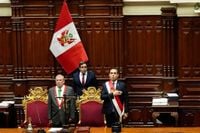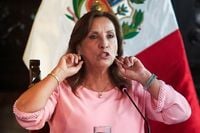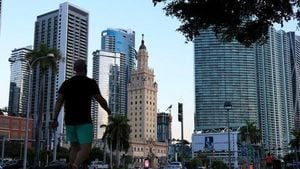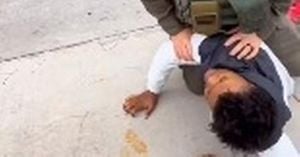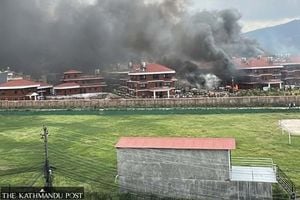In the early hours of October 11, 2025, Peru’s new interim president, José Jerí, strode purposefully into Lima’s maximum-security Ancón I prison, flanked by elite police officers. His crisp white shirt sleeves were rolled up, his demeanor determined. This was no ordinary visit: Jerí was overseeing a series of coordinated raids on prisons housing some of the country’s most notorious gang leaders, a bold move meant to send a message that the government was finally getting tough on the rampant crime wave gripping the nation.
Jerí’s dramatic entrance onto Peru’s national stage came just a day after the lightning impeachment of Dina Boluarte, whose deeply unpopular presidency ended in the wake of a horrific shooting at a concert in Lima. The attack, which left one dead and several injured, was the latest in a string of violent incidents blamed on extortion gangs that have terrorized Peruvians from all walks of life. The public’s patience had run out, and Congress responded swiftly, ousting Boluarte and thrusting Jerí—a 38-year-old conservative lawmaker from the Somos Peru party and the then-president of Congress—into the hot seat.
“The evil that afflicts us at this moment is public insecurity,” Jerí announced to lawmakers during his swearing-in on October 10, according to the Associated Press. “The main enemy is out on the streets. Criminal gangs, criminal organizations, they are our enemies today.” He pledged to “declare war on crime,” echoing the frustration and fear felt by millions of Peruvians.
That frustration is not unfounded. According to AFP, Peru has seen a staggering 540 percent increase in reported extortion cases, from 2,396 in 2023 to 15,336 in 2024. Homicides have soared, with 2,082 killings recorded last year—half of them contract murders—up from 676 in 2017. Bus drivers, musicians, business owners, and everyday citizens have been targeted by gangs demanding protection money. At least 47 bus drivers have been murdered in 2025 alone, and the violence has sparked months of protests and strikes across Lima. The situation has become so dire that, as political scientist Fernando Tuesta told AFP, Congress sought to pin the security crisis squarely on Boluarte with her impeachment.
The prison sweeps led by Jerí on his first full day in office were as much about optics as about enforcement. Authorities uncovered smuggled cell phones, drugs, and sharp objects used as weapons at Ancón I and three other prisons: Lurigancho in Lima, Challapalca in the high Andes, and El Milagro in the north. Jerí made his intentions clear in a social media post: “Crime does not rest, neither do we. We will continue to fight crime 24 hours a day, seven days a week. Without respite, without fear and with determination.”
But will these high-profile actions be enough to stem the tide? The skepticism is palpable on the streets. “We’ve traded one rat for another (...) We’re in a very bad way,” lamented Gaby Valdivia, a flower merchant in Lima, in an interview with AFP. Political scientist Augusto Alvarez put it bluntly: “We’re very used to presidents (...) falling quickly and the lives of Peruvians remaining the same.”
Jerí’s rise to the presidency has been meteoric—and not without controversy. Born to a middle-class family in Lima, he graduated from the state-run Federico Villarreal National University in 2014 and later earned a law degree from a private university. He joined Somos Peru in 2013 while still a student, and after a series of unsuccessful municipal campaigns, he landed in Congress in 2021 as a substitute legislator when Martin Vizcarra was disqualified. By July 2025, Jerí had become president of Congress, putting him next in line for the presidency after Boluarte’s ouster, since there was no vice president in office.
Yet Jerí’s record is far from spotless. In December 2024, he was accused of sexual assault by a woman who attended a party. The case was shelved in August 2025 by the attorney general due to lack of evidence, and Jerí has consistently denied any wrongdoing. Old social media posts with sexist content have also resurfaced, causing further public backlash. Local media have reported allegations that Jerí solicited payments from companies in exchange for favors, which he also denies, stating his willingness to cooperate with any investigation. “He’s surrounded by controversies,” observed Jo-Marie Burt, a visiting professor at Princeton University’s Latin America program, as quoted by Reuters.
The political context Jerí inherits is nothing short of chaotic. Peru has had seven presidents in the past nine years, with three impeached and two resigning to avoid removal since 2018. The country’s political class is widely seen as inept and corrupt; Boluarte herself left office with a dismal 96 percent disapproval rating, according to Ipsos. Congressional approval is scarcely better, at 89 percent. The volatility is such that experts warn Jerí could face the same fate as Manuel Merino, another congressional president who lasted only five days in office after a 2020 impeachment. “There are legitimate fears that Jerí could be open to manipulation from powerful parties in Congress,” said Nicholas Watson, managing director at political risk consultancy Teneo, in comments to Reuters. “But first, he needs to survive any protests that occur in the next few days.”
And protests are indeed looming. Demonstrations against Boluarte’s government had already erupted in late September over pension reform and the government’s failure to address crime, with students, bus companies, and merchants joining forces. At least 74 people have been injured in recent clashes, and a new wave of anti-government protests is planned for mid-October. Jerí’s ability to maintain calm and project authority in the face of such unrest will be an immediate test of his leadership.
Despite the turmoil, Peru’s economy has shown surprising resilience. The sol, its currency, remains one of the most stable in Latin America, and annual inflation is low, below 1.4 percent. However, the country’s Achilles’ heel is its informal labor sector: seven out of ten workers lack legal protections or social benefits, leaving them vulnerable to both economic shocks and criminal exploitation.
Meanwhile, former president Boluarte faces her own legal troubles. She is under investigation by the Public Ministry for alleged money laundering dating back to 2019, and the agency has requested that she be barred from leaving the country. Boluarte has denied any intention to seek asylum, telling Diario El Comercio, “It is not even in my slightest thought, nor in my patriotic feelings.”
Jerí’s tenure is set to last until July 2026, three months after general elections scheduled for April 12, 2026. In his inaugural address, he promised “transparent” elections and a relentless fight against crime. But with political waters growing ever choppier and public trust at a historic low, Peruvians are watching closely—wondering if this time, real change might finally be within reach.
